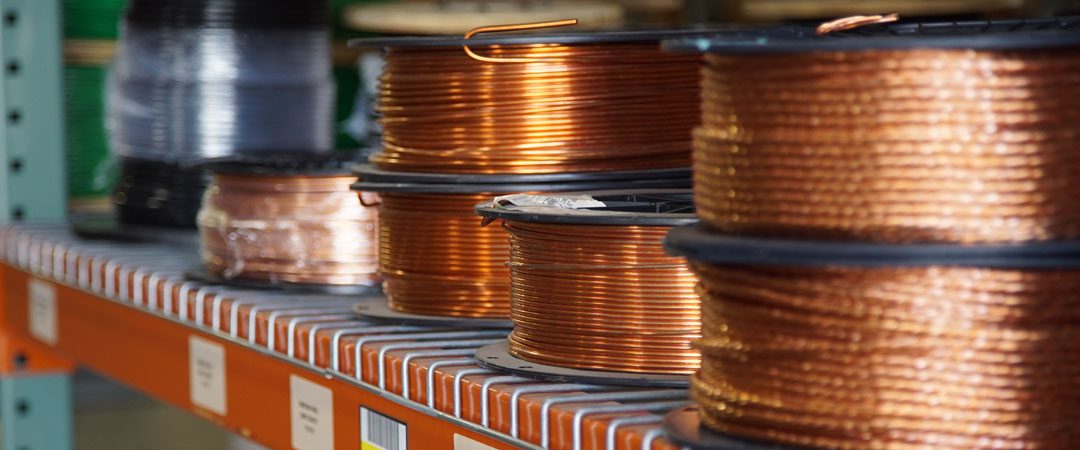September 6, 2022 By Casey Schmidt, Category Director

The price and availability of copper rod took a sharp turn as we entered September.
Why it matters: Copper rod is the main component in ground wire and lighting conductors, so changes in supply affect costs and lead times.
Why you may not have noticed it: The availability of copper rod does not directly impact the overall price per pound on COMEX. This is because COMEX only represents the base price of copper.
The total cost of copper equals the COMEX price plus an “adder” that depends on the shape you buy it in:
- Ingots are large bricks used to make brass and bronze.
- Cakes are eight-inch-thick slabs used for copper plate, strips, sheets and foil.
- Billets are eight-inch-thick logs used for copper tubing and pipe.
- Rods are 0.5 inches thick and are used for copper wire and lighting conductor.
Wire manufacturers must buy copper in the form of rods, and recently, the adder for rods has doubled to $0.30 per pound.
Why it’s happening: The top three rod mills in the country — plus one in Canada — are either shut down or delayed. Other mills are overwhelmed and unable to meet the shift in demand.
- Workers at a Canadian mill went on strike at midnight on September 1. Nexans Quebec sells rod to the U.S. market. Its labor union is asking for a 24% wage increase over three years.
- A rod mill in Georgia that sells to many others in the industry was down for at least eight days in August, and they are still working on getting back to full production.
- ASARCO Copper announced an indefinite shutdown of its Amarillo, Texas, refinery, citing freight costs, maintenance issues and labor shortages.
- A northeast rod supplier is still trying to catch up after a fire damaged their plant in August.
As a result, several vendors are seeking alternate sources for copper rod.
The bottom line
COMEX is a good indicator for the copper market, but there is more involved in the price of copper wire than just the base number.
The issues listed above will have a real impact on pricing for rod-related products, but availability may become the bigger challenge.
Read more:
Why the Supply Chain Will Not Go Back to 2019 According to a Geopolitical Strategist
Disclaimer
Our information is compiled from several sources that, to the best of our knowledge and belief, are accurate and correct. Border States accepts no liability or responsibility for the information published herein. These materials are provided for informational use only and do not, nor are they intended to, constitute legal advice.
The links contained in this article are provided for your convenience only. While we try to include only links to or frames of those sites which are in good taste and safe, we are not responsible for the content of third-party sites and cannot guarantee that sites will not change without our knowledge, and inclusion of such links and frames in this article does not imply Border States’ endorsement of the linked or framed sites or their content. If you decide to access any of the third-party websites linked to in this article, you do so entirely at your own risk and subject to the terms and conditions of use for such websites.